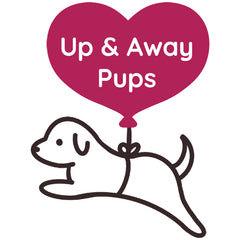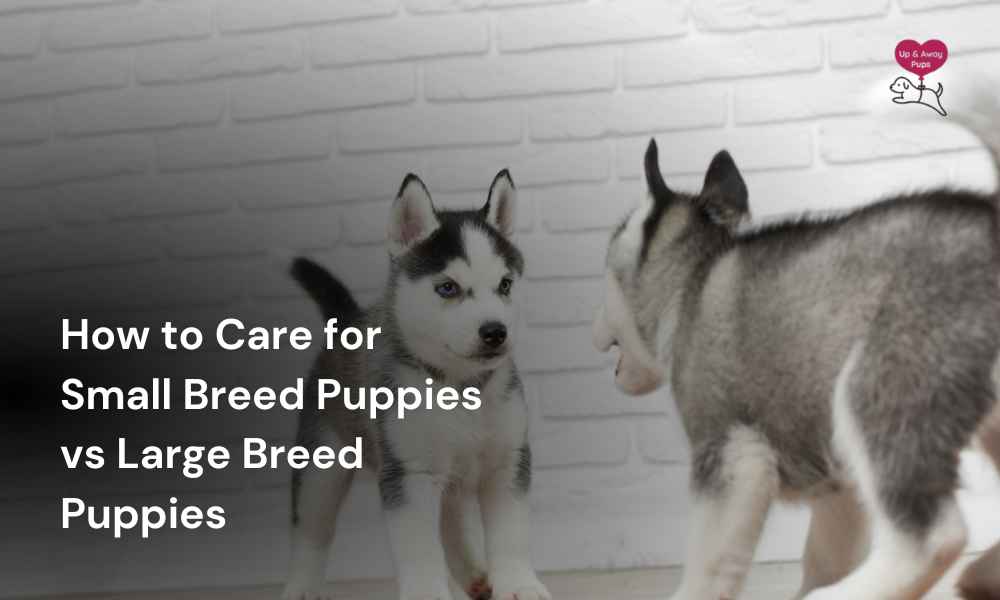How to Care for Small Breed Puppies vs Large Breed Puppies
Caring for small and large breed puppies differs significantly in diet, exercise, training, and health needs. Small breeds need calorie-dense food, gentle play, and early socialization to avoid behavioral issues. Large breeds require controlled growth diets, low-impact exercise, and firm training to manage their size. Health concerns also vary, with small breeds prone to hypoglycemia and large ones to joint problems. Understanding these differences helps pet parents provide proper care, ensuring puppies grow into healthy, well-behaved dogs regardless of their size or breed.
Puppies and happiness come in all sizes. Well, technically, all puppies are small, but the care and attention for small and large breed puppies does vary quite a bit. Their diets, exercise, training, and health care vary in different ways, and as a pet parent, one must understand the differences.
This guide breaks it down in a fun, practical way so you know exactly what to expect for your new furry friend.
Diet and Nutrition
Let’s follow an ascending order and start with small breed puppies. They have fast metabolism and burn calories quite fast, so they need nutrient-rich food more often. Feed them small kibble that is easier to chew and digest, and consider giving them three to four small meals a day to prevent low blood sugar, which can cause weakness or even fainting in tiny puppies.
Larger breeds, though, grow rapidly, and you must be careful with their feeding. Too many calories or too much calcium can strain their developing bones and joints, putting them at risk of hip dysplasia and other orthopedic issues. Large breed puppy formulas are lower in calories but high in essential nutrients for strong bones and muscles. Feeding should be split into two or three meals a day to regulate growth and prevent bloating, which can be dangerous.
Exercise Needs
Small puppies are energetic but fragile, needless to say. They burn out calories rather quickly, so short play sessions with them are plenty. Oh, you’d want to make sure that they don’t go jumping from furniture to furniture or play rough outside while they are puppies, as that can cause injuries. Small breeds thrive with indoor games and brief walks, which help them explore safely.
Large puppies need longer, structured exercise to develop strong muscles and avoid obesity. But they should not be overexercised. Extended running or jumping can harm growing joints. Gentle walks, short training sessions, and safe playtime in a fenced yard work well. Swimming can be an excellent low-impact activity for large breeds.
Training and Socialization
Small breed puppies are often a little too confident for their size, developing what is called “small dog syndrome.” We’re looking at you, Chihuahuas. These dogs often become fearless and take up challenges beyond their weight class. Thankfully, basic training and socialization will fix this along with preventing fearfulness or excessive barking. Expose them to different people, pets, and environments gradually.
Large breed puppies need more and better training because it is their size that makes them a threat if they’re aggressive. A small dog can only do so much damage, even if they go berserk. The same cannot be said for a large dog. So, they need to go through obedience training, leash control, and socialization early on.
Health Considerations
Both small and large breeds come with their fair share of health concerns that need to be proactively taken care of. Small breeds are victims to issues like hypoglycemia, dental problems, and fragile bones, whereas large breeds are prone to hip and elbow dysplasia, joint problems, and bloating. For both, perform regular vet checkups and follow the instructions provided by them.
Housing and Comfort
Small puppies don’t need much: a small, cozy and contained space is more than enough for them. They don’t need a yard and very much enjoy the apartment life. Best small dog breeds for apartment living often include breeds like Bichon Frise, Pug, French Bulldog, etc.
The bigger pups, naturally, need more space to stretch and move so consider getting bigger crates for them. If you live in an apartment, you need to take them out often so they don’t feel suffocated inside.
Grooming Needs
The grooming needs will vary largely depending on the specific breed of the dog instead of their size. Long-haired and furry pups will need frequent brushing and grooming, whereas short-haired breeds will be easier to maintain. While there are establishments that can do this for you, as a pet parent, you ought to learn how to groom your puppy, at least the basics.
Conclusion
Caring for a puppy, big or small, is an extremely rewarding experience. This small little thing is dependent upon you for its survival, from food to safety to shelter. Different breeds require a different kind of upbringing, though. Small breeds need to be fed carefully and protected from rough play, whereas large pups need controlled growth, plenty of exercise, and room to move.
By recognizing these differences early, you set your puppy up for a healthier, happier life, no matter their size.
FAQs
Can Small Breed Puppies and Large Breed Puppies Eat the Same Food?
No. Small breeds need calorie-dense, small-kibble food. Large breeds need controlled calories and nutrients for bone development.
How Much Exercise Does a Large Puppy Need Compared to a Small Puppy?
Large puppies need longer but low-impact sessions. Small puppies benefit from short, frequent play indoors or on safe surfaces.
Are Training Techniques Different for Small Vs Large Puppies?
The principles are the same, but size affects how strictly you enforce leash control and bite inhibition. Large puppies need careful supervision due to their strength.


